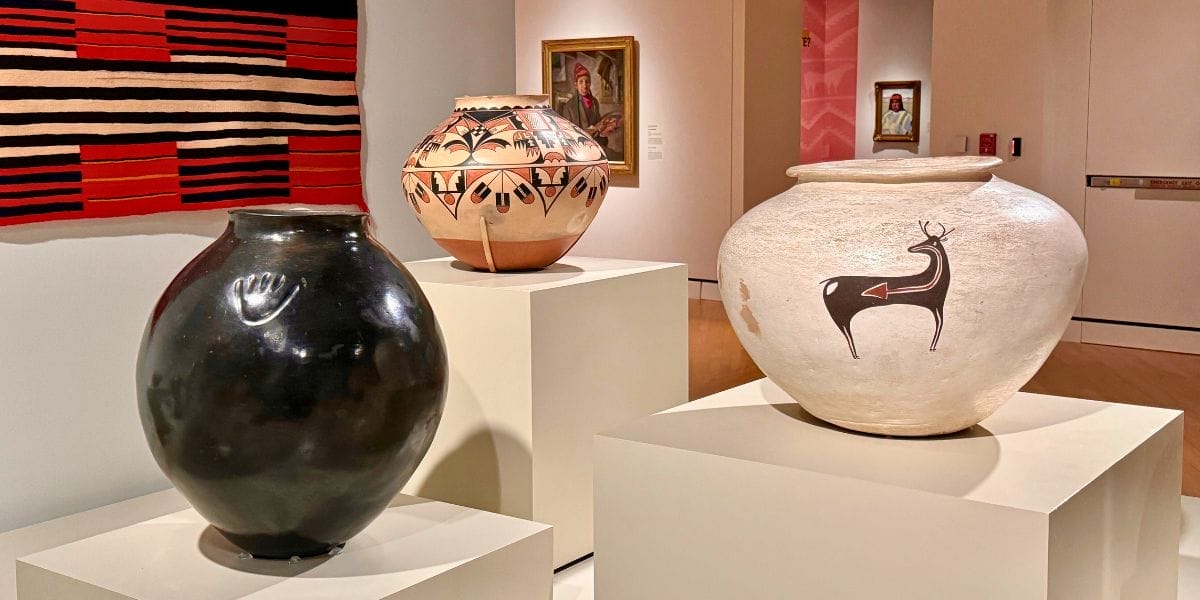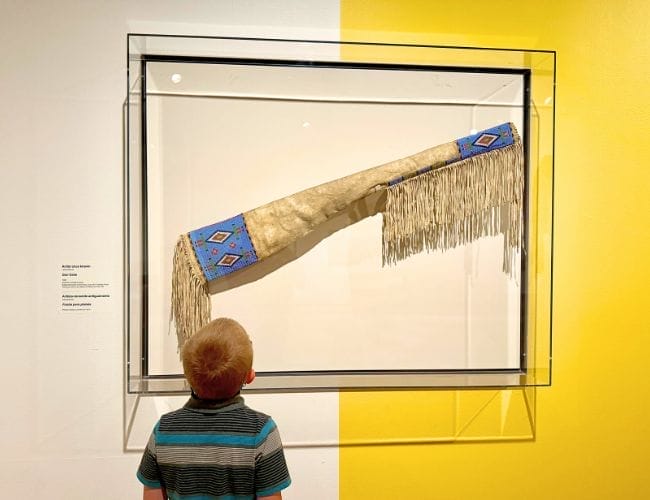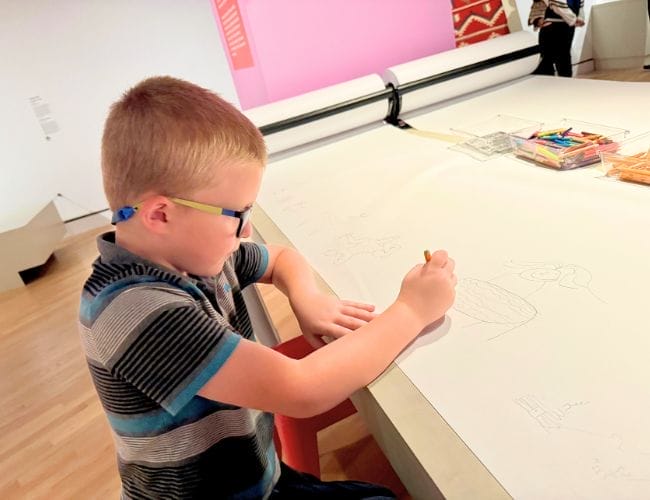

Uh oh...
It appears that you're using a severely outdated version of Safari on Windows. Many features won't work correctly, and functionality can't be guaranteed. Please try viewing this website in Edge, Mozilla, Chrome, or another modern browser. Sorry for any inconvenience this may have caused!
Read More about this safari issue.

Art has long been a powerful medium for self-expression, reflection, and storytelling. In places like Arkansas, where the rich history and cultural heritage of the land and its people are woven into the fabric of everyday life, art offers a unique way to connect with one’s roots. Whether through painting, music, writing, or other forms, art allows individuals to explore and articulate their personal stories. In a world that often emphasizes the hustle and bustle of daily life, taking time to engage with art can help us reflect on and convey our identities.
I recently spent a special day with my son, planning a trip that blended something I loved with an experience I thought he’d enjoy. After completing his Creek Nation citizenship, I discovered the Knowing The West exhibit at Crystal Bridges and knew it would be a great opportunity for us. With displays of pottery, saddles, beaded accessories, and tribal weapons, I saw it as a chance for us to explore his ancestral roots and learn more about his heritage.

The day was rewarding for both of us. I had the chance to invest in quality one-on-one time with him—starting meaningful conversations, teaching, and observing together. He felt the focused attention of a parent while engaging with art that deepened his connection to his origin story.

A few highlights of our day:
- Pottery and baskets – he likes to do crafts, and we were able to talk about how things we do as crafts for fun were a necessary part of everyday life for Native Americans
- Story skin – our discussion about drawing things to represent a significant moment in life for that year. I noted a couple of times when a star or moon might represent a year when an eclipse, meteor, or comet adorned the sky.
- Effigy – honoring death, the more we normalize normal things, the more we can talk about hard things when they happen. One artist made a sculpture of found objects memorializing his horse. When my son asked “why,” it gave us space to talk about things that honor others and how we remember the past.
- Draw his own annual symbol – part of the observation experience includes an interactive art station inviting visitors to sit and add artwork to the canvas. I fully expected him to draw a baseball player or a buffalo from our summer trip. But he drew himself sitting across the table from his teacher at his conference we just had, where he’d learned about excellent test scores for math and reading, and he was proud of himself. It was a significant moment.
- Kid’s Studio is one of his favorite spaces, where he always feels free to create and participate in projects. It’s where I can often see what he’s learning from our experience and what he’s thinking about in his mind as he processes or needs space to be free without restriction on his project. They typically have art experience related to the temporary exhibit.
A fun surprise to our day was finding the Navigating Lolelaplap exhibit open in the main gallery. This new display explores the story of the Marshallese people and their journey from the Islands to America. The largest population of Marshallese beyond the Islands is in Springdale. We shop, worship, and play at the park with many of these families. And, while he doesn’t ask many questions, it’s evident at 6 when he notices differences between people.
Learning about their culture allowed us to discuss the differences between European descendants, Native Americans, and the Marshallese. We eat different foods and have different practices in our homes, yet we are remarkably similar in our love of family, gathering, faith, and desire for safety and protecting sacred spaces.

Using Art to Inform Your Personal Story and Heritage
Part of our experience was to use something close to us to continue to explore our origin stories. How could we look at art and learn? How can we build our personal story as we learn more about our ancestors and those who captured their story, even if mimicked in pen and ink, oil on canvas, woven threads, welded metals or multi-media productions?
Teaching our children about their heritage includes going through a box of photos or listening to old family stories or cultural traditions, but it’s so much more than that! It’s about connecting our children to their roots and helping them understand who they are in this big, crazy world.

Exploring Ancestors
Getting to know their ancestors is like opening a treasure chest of stories! Imagine your children learning about the brave people who came before them, their struggles, triumphs, and the values they held dear. Whether it’s a great-grandparent who immigrated to the country or a relative who stood up for what was right, these stories can inspire and shape how your children view the world.
Understanding Experiences
When children learn about their heritage, they also gain insight into the experiences of those who came before them. This isn’t just about the good times; it includes the challenges and hardships. Understanding these experiences helps children build empathy and resilience. It shows them that while life can throw some serious curveballs, there’s strength in perseverance and community.
Lessons from the Past
So, what can children gain from these stories? Well, plenty! They can discover the importance of family, the value of hard work, and the significance of standing up for one’s beliefs. These lessons can guide them in their own lives, helping them navigate challenges and make informed choices. Plus, it’s a wonderful way to instill a sense of pride in their identity.
Informing, Not Defining
Here’s a key point: while learning about their heritage is important, it’s equally vital to understand that these stories inform who they are without completely defining them. Your child is their own person, with unique experiences and perspectives. Heritage gives them a framework and a sense of belonging, but it shouldn’t box them in. Encourage them to explore their identity in ways that resonate with them personally!

Impact on Today
Lastly, understanding their heritage can affect how children see the world today. It helps them appreciate diversity and recognize the richness of different cultures. It can spark curiosity about the world around them, leading them to embrace new experiences and perspectives. Plus, having a solid grasp of their roots can give them confidence and a sense of purpose as they grow.
As parents, let’s make it a priority to share these stories with our children! Give them opportunities to visually see the artifacts that inform their stories from historical and art museums. Teaching them about their heritage honors the past and equips them for the future. Maybe grab a paintbrush or crayon box and carve out a little time to get artsy together. Let them ask questions or wait until a family gathering, and they can talk to a parent or great-grandparent.

Let’s inspire the next generation to appreciate their origin stories while carving out their unique path in life!
All images from the story were taken by the author of this article from publicly displayed art at Crystal Bridges Museum. While the images are mine, the artwork was beautifully created by the author, whether known by name or story. Copyright or any likeness of the original artwork belongs to them alone.
We do the work.
You check your email.
Sign up for our weekly e-news.
Get stories sent straight to your inbox!









Like this story? Read more from Keisha Pittman McKinney
The holidays have a way of bringing us together - around food, laughter,...
Oh my goodness… there’s no cinnamon-roll story more special in...
Every year, as we unpack our Christmas boxes, stories unfold with each...
Join the Conversation
Leave a Comment